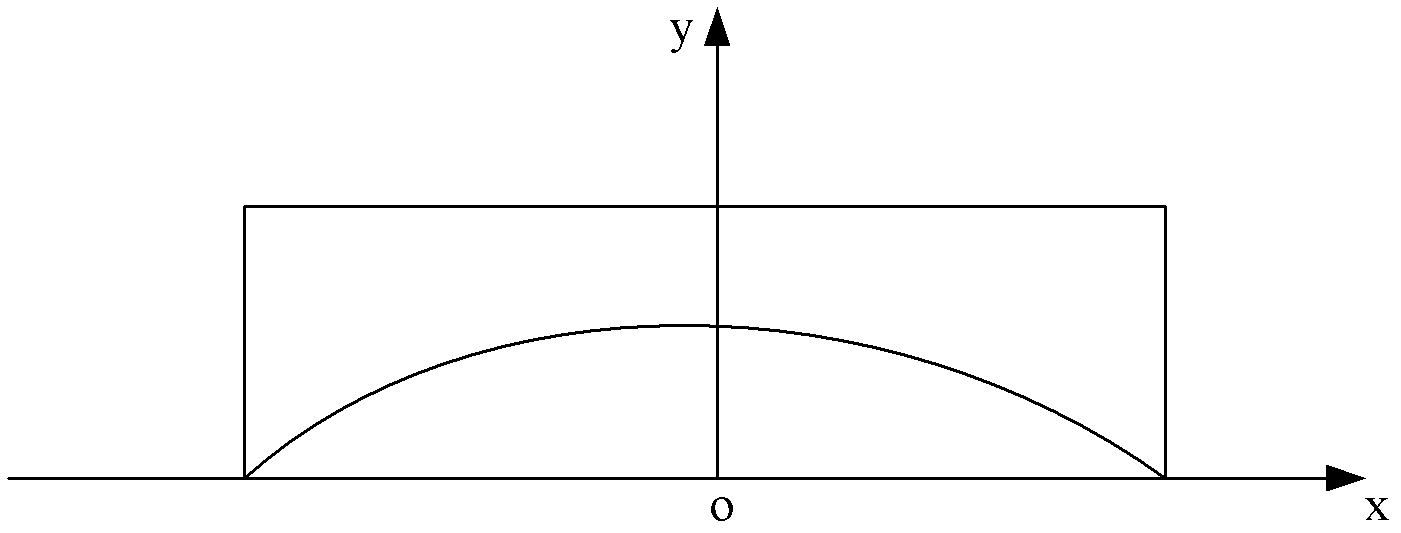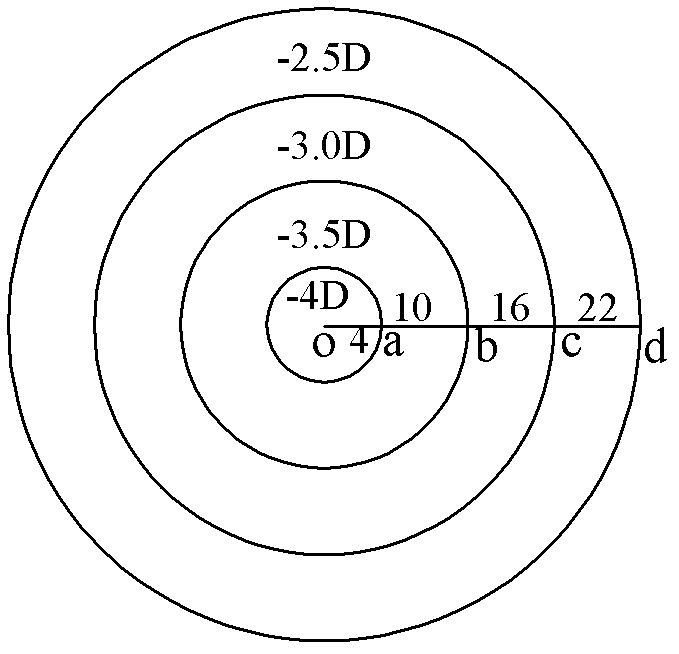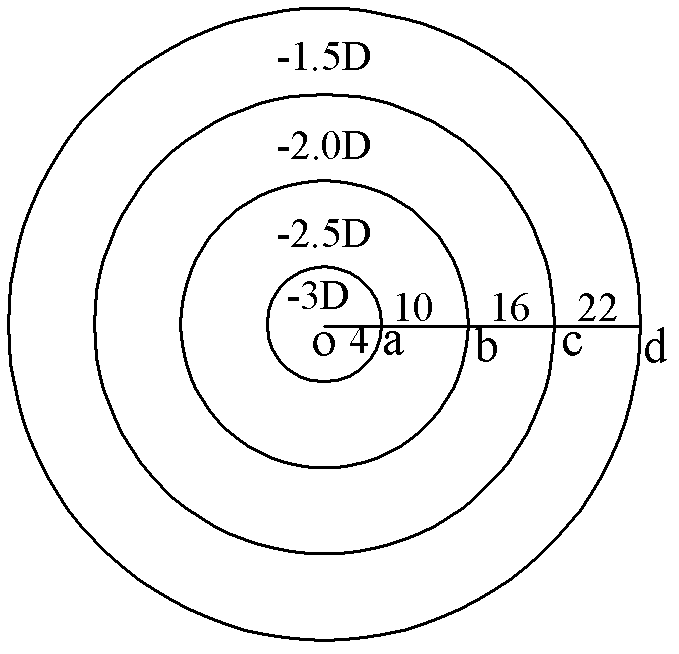Myopic glasses
A technology for myopia and glasses, applied in the field of myopia glasses, can solve the problems of not reducing the defocus of the side center hyperopia, unable to control the progress of myopia, etc., and achieve the effect of reducing the uniformity of visual deprivation and reducing the uniformity of the side center hyperopic defocusing.
- Summary
- Abstract
- Description
- Claims
- Application Information
AI Technical Summary
Problems solved by technology
Method used
Image
Examples
Embodiment 1
[0028] Such as figure 2 for figure 1 The orthographic projection view of the lens in the y-axis direction shows the relationship between the central radius of the lens and the power of addition in different numerical ranges. Point O in the figure is the projection center of the lens, and the line segments oa, ob, oc and od are respectively different center radii, where oa=4mm, ob=10mm, oc=16mm, od=22mm.
[0029] Set the degree of myopia of the myopia patient to be -4.00D. At this time, the circle with radius oa in the figure (hereinafter referred to as the first circle) has the degree (that is, the central degree) of the corresponding area on the lens as -4.00D. The circles are outward in turn, and the circle with a radius of ob (hereinafter referred to as the second circle) has a power of -3.50D on the corresponding area on the lens, that is, add 0.50D on the basis of the central power.
[0030] Sequentially, the power of the area corresponding to the circle with radius oc...
Embodiment 2
[0035] Such as image 3 , the difference between this embodiment and embodiment 1 is: in this embodiment, the myopia degree of setting myopia patient is-3.00D, the circle (hereinafter referred to as the 1st circle) that radius is oa among the figure at this moment is in the lens The power of the corresponding area on the lens (that is, the central power) is -3.00D. From the inner circle to the outside, the circle with a radius of ob (hereinafter referred to as the second circle) has a power of -2.50D in the area corresponding to the lens, that is Add light 0.50D on the basis of the central degree.
[0036] In turn, the circle with radius oc (hereinafter referred to as the third circle) has a power of -2.00D on the corresponding area on the lens, that is, add 1.00D on the basis of the central power.
[0037] Sequentially, the circle with a radius of od (hereinafter referred to as the 4th circle) has a power of -1.50D on the corresponding area on the lens, that is, adding 1.50D...
Embodiment 3
[0040] Such as Figure 4 , the difference between this embodiment and embodiment 1 is: in this embodiment, the degree of myopia of the myopia patient is set to be -2.00D, and the circle (hereinafter referred to as the first circle) with a radius of oa in the figure is on the lens The degree of the corresponding area on the lens (that is, the central degree) is -2.00D. From the inner circle to the outside, the circle with a radius of ob (hereinafter referred to as the second circle) has a degree of -1.50D in the area corresponding to the lens, that is Add light 0.50D on the basis of the central degree.
[0041] In turn, the circle with radius oc (hereinafter referred to as the third circle) has a power of -1.00D on the corresponding area of the lens, that is, add 1.00D on the basis of the central power.
[0042] In turn, the power of the circle with radius od (hereinafter referred to as the 4th circle) on the lens corresponds to the degree of hyperopia - 0.50D, that is, add ...
PUM
| Property | Measurement | Unit |
|---|---|---|
| Diameter | aaaaa | aaaaa |
Abstract
Description
Claims
Application Information
 Login to View More
Login to View More - R&D
- Intellectual Property
- Life Sciences
- Materials
- Tech Scout
- Unparalleled Data Quality
- Higher Quality Content
- 60% Fewer Hallucinations
Browse by: Latest US Patents, China's latest patents, Technical Efficacy Thesaurus, Application Domain, Technology Topic, Popular Technical Reports.
© 2025 PatSnap. All rights reserved.Legal|Privacy policy|Modern Slavery Act Transparency Statement|Sitemap|About US| Contact US: help@patsnap.com



